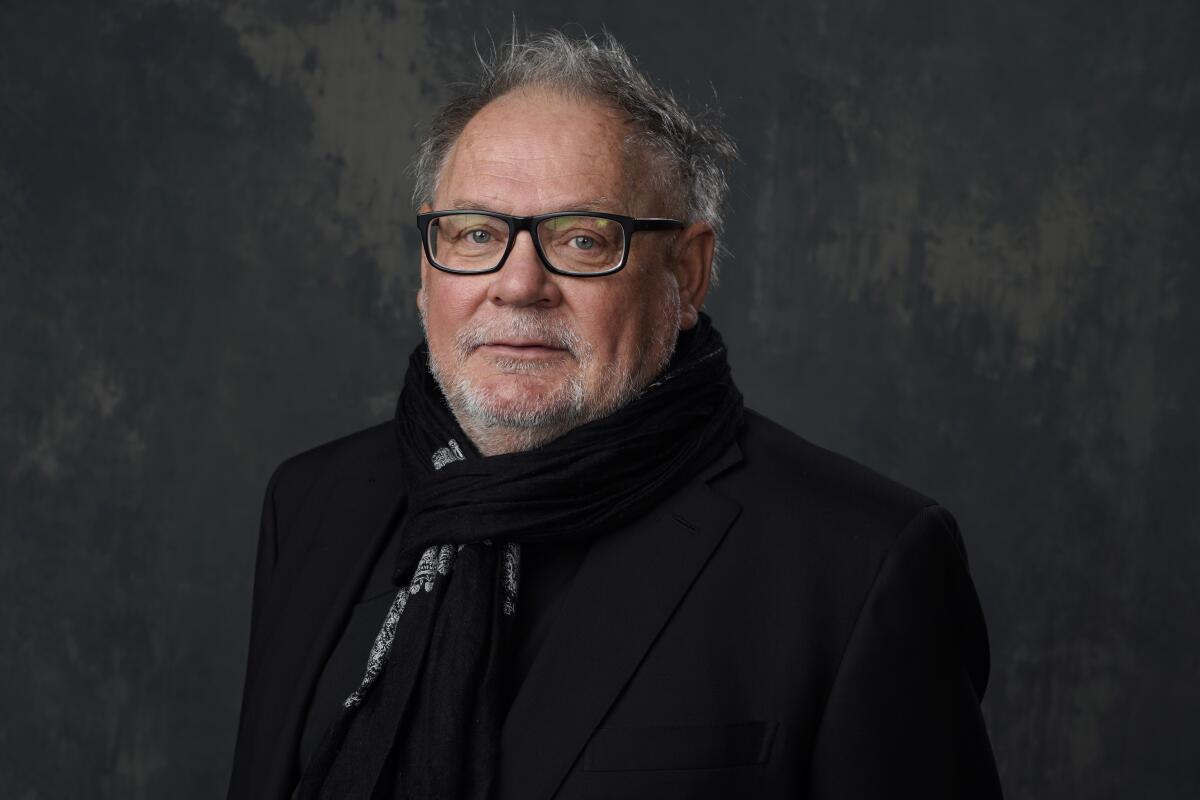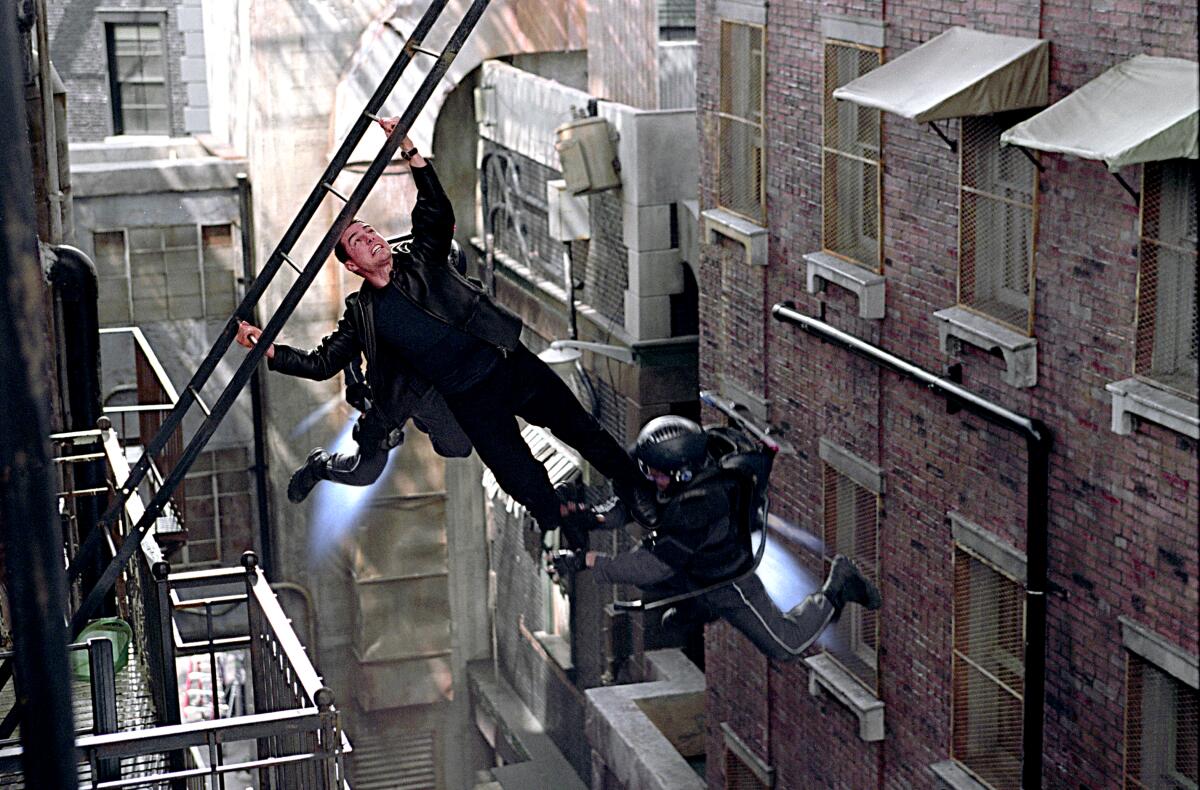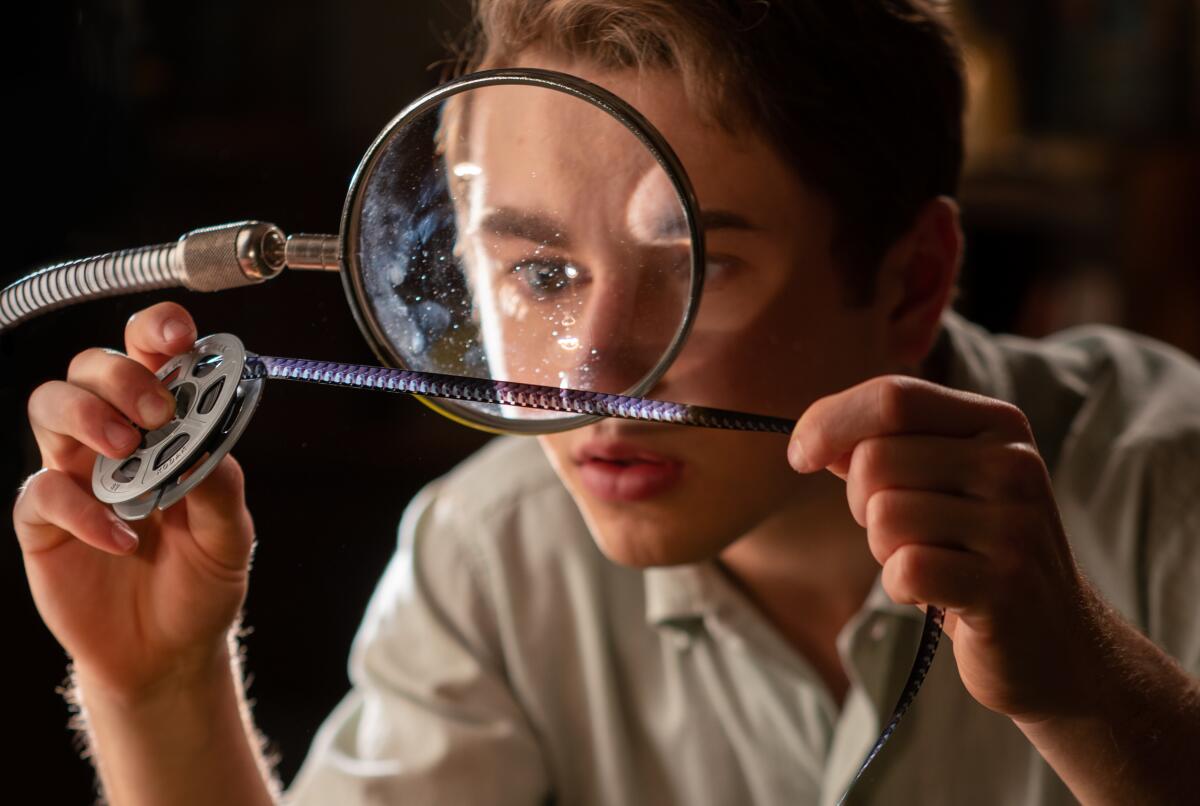‘Munich,’ ‘Lincoln,’ ‘The Fabelmans’ — look for DP Janusz Kamiński on a Spielberg set

- Share via
Janusz Kamiński had just finished shooting a 1993 TV movie called “Class of ’61,” produced by Steven Spielberg. The hitmaker, who had yet to win his first Oscar, liked what he saw in the young cinematographer. He approached Kamiński with another job offer.
“He told me he was going to make a black-and-white movie, and it was going to be shot in Poland,” Kamiński recalled in a recent video interview. Spielberg knew Kamiński was from Poland, and he assured him this had nothing to do with the offer. The director had admired Kamiński’s work on Diane Keaton’s “Wildflower,” and he thought they could make good movies together.
As usual, Spielberg was right. That black-and-white film, “Schindler’s List,” is widely considered a high-water mark in film history. It won Oscars for both Spielberg and Kamiński, whose rich, layered shadows are key to the Holocaust epic’s emotional impact. And it launched one of the all-time great director-cinematographer collaborations, one that continues to this day with “The Fabelmans,” which is bound to net Oscar nominations for both men. (Each has won twice, for “Schindler’s List” and “Saving Private Ryan”).
It’s been a long, prolific trip that will likely end only when they stop working.
“It just happens that we really adore each other and like working with each other,” Kamiński says. “But the reason we are able to maintain that relationship is because he is a very productive film director. His work ethic is mind-blowing.”
“The Fabelmans” stands among their most personal collaborations. Like many of their films, including “Amistad,” “Munich,” “Lincoln” and “Bridge of Spies,” it’s a period piece. But the subject isn’t some imposing historical event or figure. It’s Spielberg’s life.
The movie is both nostalgic and anti-nostalgic, encompassing the passionate, film-obsessed youth of Spielberg surrogate Sam Fabelman (Gabriel LaBelle) and the disillusion that comes when he realizes, via his own home movies, that his mother (Michelle Williams) is in love with his father’s best friend (Seth Rogen). Kamiński’s task was to find the right color palette for both moods: the brightness and hope, and then the muted disbelief.

Kamiński sees one key to the movie’s aesthetic in its title: “It’s called ‘The Fabelmans,’ right? That allowed me to have a certain nostalgic approach towards this film and this time period that Steven and I have worked with on several occasions.” He mentions “Catch Me If You Can,” “Munich,” “Bridge of Spies” and “West Side Story.” “It’s that particular timeframe that he likes, that represents his youth. But also we like to make movies either in the past or in the future. We’ve never made a movie that’s contemporary.”
Indeed, they’ve done equally well with science fiction. Think “Minority Report,” a Spielberg masterpiece too often consigned to the genre film category. For a movie about an advanced crime-fighting system that captures murderers before they murder, Kaminski and Spielberg conjured a shimmering metallic look that contrasts hard compositions with a soft halo effect. “I was trying to get away from it looking like ‘Blade Runner,’” Kamiński says. (Both films are based on fiction by Philip K. Dick). “We were trying to put some tension in the compositions.”
Kamiński is one of many Eastern European cinematographers who have found favor with American directors, including László Kovács (“Easy Rider,” “Ghostbusters”) and Vilmos Zsigmond, who shot Spielberg’s “Close Encounters of the Third Kind.” Kamiński refers to an “Eastern European aesthetic” — drab, gray — that contrasts with the inviting color scheme of so many Hollywood movies. The tension between these two approaches yields some fascinating results, which, not coincidentally, can often be found in Spielberg’s films of the past 30 years. The director, often simplified as a schmaltzy optimist, also has a dark side. Kamiński, though “attracted to the sweet beautification of images,” helps him bring it to the screen, often through the muted colors that informed his early years in Poland and crop up during the less cheerful moments of “The Fabelmans.”

The two have now made 20 movies together, a virtually unheard-of joint body of work. After all that time, Kamiński has come to appreciate many things about his most frequent collaborator.
There’s his work ethic: “He cuts the movie at lunch, after lunch, on the weekend, and four weeks or five weeks after we finish principal photography the picture is locked.”
There’s the way he treats people on his sets: “I’m always enlightened by how kind he is towards the actors. He loves actors, and he would never make an actor feel that they’re doing something lesser-than.”
Most of all, there’s what Spielberg and Kamiński share: an undiluted passion for the craft above all else.
“He does it because of love for the movie,” Kamiński says. “Not the fame, and not the homes, and not the shoes. He loves, genuinely loves, making movies, and that’s it.”
More to Read
From the Oscars to the Emmys.
Get the Envelope newsletter for exclusive awards season coverage, behind-the-scenes stories from the Envelope podcast and columnist Glenn Whipp’s must-read analysis.
You may occasionally receive promotional content from the Los Angeles Times.






